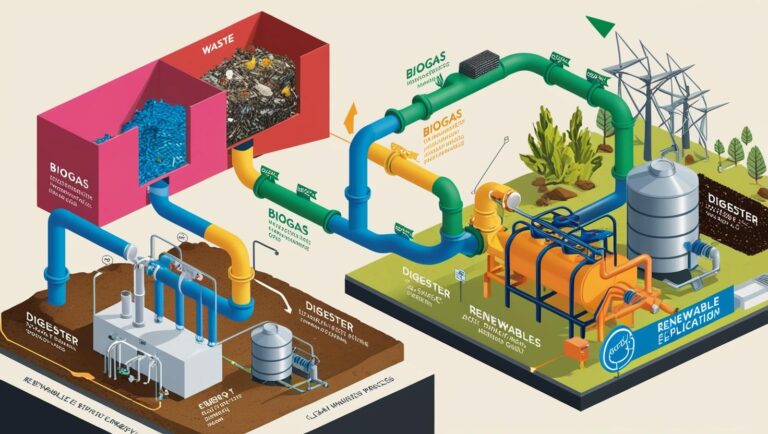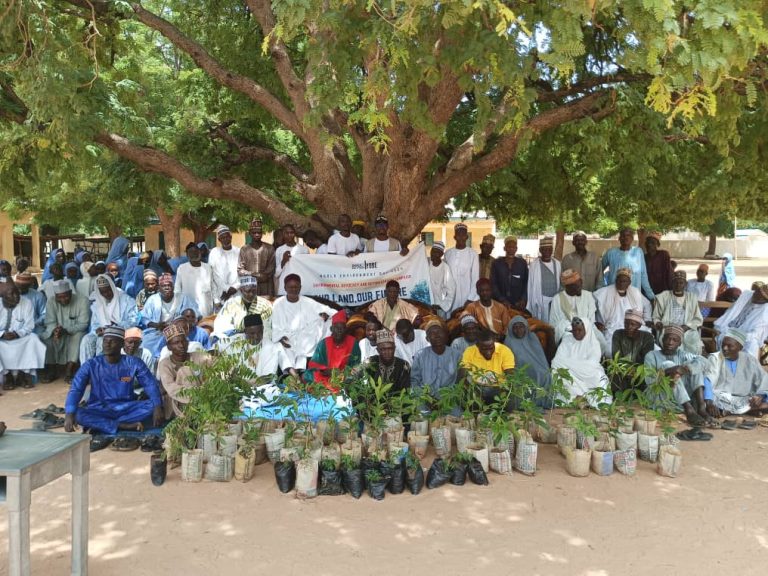BIOGAS – A RENEWABLE ENERGY SOURCE – by Kingston Wereloo.
Renewable power is turning into an increasingly significant issue these days. The world right now
depends intensely on coal, oil, and gas for its energy. Non-renewable energy sources like fossil
fuels and coal are drawn from finite sources that will in the end diminish, get excessively costly,
or be environmentally damaging. Due to the increasing expense of fossil fuels and the threat of
climate change, there have been positive advancements in this field.
These advancements have enhanced the interest in cleaner and more economical techniques of
renewable energy. However, there are various kinds of renewable energy sources accessible like
solar, biomass, tidal, wind, and so on. Each kind of energy has its benefits just as its disadvantages.
But what exactly is biogas? How does it work? And why should we pay more attention to it?
What is Biogas?
Biogas is a mixture of methane, CO2, and small quantities of other gases produced by the anaerobic
digestion of organic matter in an oxygen-free environment.
It is a type of biofuel naturally produced when organic materials like animal manure, food waste, sewage, and crop residues decompose in the absence of oxygen—a process known as anaerobic digestion. The result is a gas composed primarily of methane (CH₄) and carbon dioxide (CO₂), which can be used for cooking, heating, electricity generation, or even fueling vehicles.
Composition Of Biogas
The precise composition of biogas depends on the type of feedstock and the production pathway,
otherwise, it is composed of methane, carbon dioxide, and traces of other gases such as nitrogen,
hydrogen sulfide, hydrogen, and oxygen.
On average, biogas contains:
- 55-80% methane (CH4)
- 20-40% carbon dioxide (CO2).
- Trace gases, including toxic hydrogen sulfide and nitrous oxide.
HOW BIOGAS REPLACES FOSSIL FUEL?
Biogas is carbon neutral hence the environmentally less damaging way of obtaining energy from
organic waste matter by eliminating methane emission into the atmosphere. The impact of biogas
generation on the environment is much lesser than the impact of fossil fuels, and natural gas.
Biogas is extensively used in some rural areas for electricity and cooking. Hence Biogas generation
is one of the most effective ways to reduce the use of fossil fuel and greenhouse gas emissions.
The key difference between natural gas and biogas is that biogas is a renewable source. This means
that the system can continue running as long as there is organic waste being added. In comparison,
natural gas comes from gas deposits underground, and once used, is gone. Another important
difference is that biogas also produces a secondary benefit that natural gas cannot: the creation of
free, methane-rich fertilizer as a natural by-product. This can either be sold to make an income or
used on farmland to improve crop yields.
USES OF BIOGAS.
- Biogas is most beneficial in the rural areas since there is no access to any other source of energy,
where indoor pollutions and deforestation are an issue. - Biogas can be used as a source to generate electricity where the wasted heat is used for other
purposes. This is done by fueling an engine-generator which in turn produces electricity. - In many places, especially rural areas it is used as a medium for cooking and heating purposes.
- Biogas can be used for running water pump-set and tube-well engines.
- They can also be used as an illuminant in a metal lantern for domestic and street lighting.
- Biogas can be compressed and used in vehicles as a source of fuel, this fuel is less pollutant and
more efficient.
ENVIRONMENTAL BENEFITS
Biogas is a solution for food waste management. Wrap estimates that UK households, hospitality and food service, food manufacture, retail and wholesale sectors produce around 10 million Tonnes of food waste per year. If this was all treated through anaerobic digestion, the industry could generate 11 TWh of biogas – enough to heat 830,000 homes – and cut emissions by 8.8 million Tonnes of CO2 equivalent, or 2% of the UK’s annual emissions. Mind-blowing, right!
According to the Federal Ministry of the Environment, Nigeria generates some 32 million tonnes of waste per year, among the highest in Africa. Of the waste generated yearly, 2.5 million tonnes
is plastic waste, most of which (70 percent) ends up in landfills, sewers, beaches and water bodies.
Can these be converted to biogas? The answer is Yes! This would help reduce the amount of waste to as low as relatively possible.
With the right processing, biogas can be upgraded to replace mined natural gas for use as fuel
for electricity production, ground transportation, and commercial and residential buildings. But by
and large, we can and should rely on zero-carbon sources like wind and solar to generate electricity,
and then electrify as many end-uses (such as ground transport and buildings) as possible.
DISADVANTAGES OF BIOGAS.
- Little Technology Advancements: Very little technological advancements have been made or introduced for streamlining and making the process cost effective. Hence, even the large-scale industrial production of biogas is not shown or isn’t visible on the energy map. Most investors are not willing to put in their capital investments in the production of biogas, although investments could be a possible solution to the problems being faced.
- It consists of impurities: Biogas goes through many refining processes and yetcontains a number of impurities. The metals in an engine can start corroding if this biogas full of impurities is used as a fuel after compressing the biogas.
- Biogas is not attractive on large scale: Large scale usage of biogas is not economically viable. Enhancing the efficiency of biogas systems is very difficult as well.
- Biogas is unstable in nature: When methane comes in contact with oxygen, biogas tends to become flammable in nature. This happens because biogas is unstable and hence it is vulnerable to explosions.
- Not suitable for all areas: Biogas can be used in areas where raw materials are available in plenty. Mostly these are available in plenty in rural areas. So, it’s only practical to build biogas plant in rural areas.
- Affected by weather: Like most of the renewable source of energy, biogas also has temperature effects. The ideal condition for bacteria to act is warm climate. So it is difficult to set up a biogas in areas where the climate is cold.
FUTURE OF BIOGAS
Energy experts claim that compressed biogas could become the fuel of the future due to its
virtue of being a clean and renewable source of energy, which is also indigenous. It is also
expected to reduce the cost of imports of natural gas.
Europe is producing today 18.4 bcm of biogas and biomethane combined. Calculations show that
by 2030, production can double towards 35-45 bcm. By 2050, production can increase at least
fivefold from today’s production levels, going up to 167 bcm.
Biogas as a fuel at all scales is well established internationally but underutilized as a means of
generating energy in Africa.
CHALLENGES OF BIOGAS IN NIGERIA.
- Lack of funding.
- Lack of policy.
- Regulatory framework and strategies on biogas.
- Unfavorable investor monetary policy.
- Inadequate expertise.
- Lack of awareness of the benefits of biogas technology among leaders.
- Financial institutions and locals.
- Resistance to change due cultural and traditions of the locals.
Biogas systems turn the cost of waste management into a revenue opportunity for America’s
farms, dairies, and industries. Converting waste into electricity, heat, or vehicle fuel provides a
renewable source of energy that can reduce dependence on foreign oil imports, reduce
greenhouse gas emissions, improve environmental quality, and increase local jobs. Biogas
systems also provide an opportunity to recycle nutrients in the food supply, reducing the need for
both petrochemical and mined fertilizers.
It is also a waste management solution that solve multiple problems and create
multiple benefits, including revenue streams. The United States currently has the potential to add
13,500 new biogas systems, providing over 335,000 construction jobs and 23,000 permanent
jobs. However, to reach its full potential, the industry needs consistent policy support. Reliable
funding of Farm Bill energy title programs and a strong Renewable Fuel Standard encourage
investment and innovation in the biogas industry. If the United States intends to diversify its fuel
supply and take action against climate change, it should strongly consider the many benefits of
biogas.
The amount of waste generated per year in Nigeria is enough to produce ample biogas to heat
thousands of homes, but this can only be possible if biogas systems are properly set up and
provisions are made for homes to own household biodigesters. These measures will not only help
to achieve a net zero emission but will reduce household waste as well as sole dependence on
Natural gas.
REFERENCES
- IEA. (2020). Outlook for biogas and biomethane, prospects for organic growth.
- World energy outlook special report, 1-93. National grid group, 2023.
- What is biogas? EESI, 2017.
- Fact sheet| biogas: converting waste to energy. GASUM, 2023.
- How is biogas produced? Renewable world, 2019.
- Biogas systems and technology. Queensland, 2016.
- Biogas production. Avris environment technologies, 2021.
- What is biogas? Sources and benefits of biogas.












